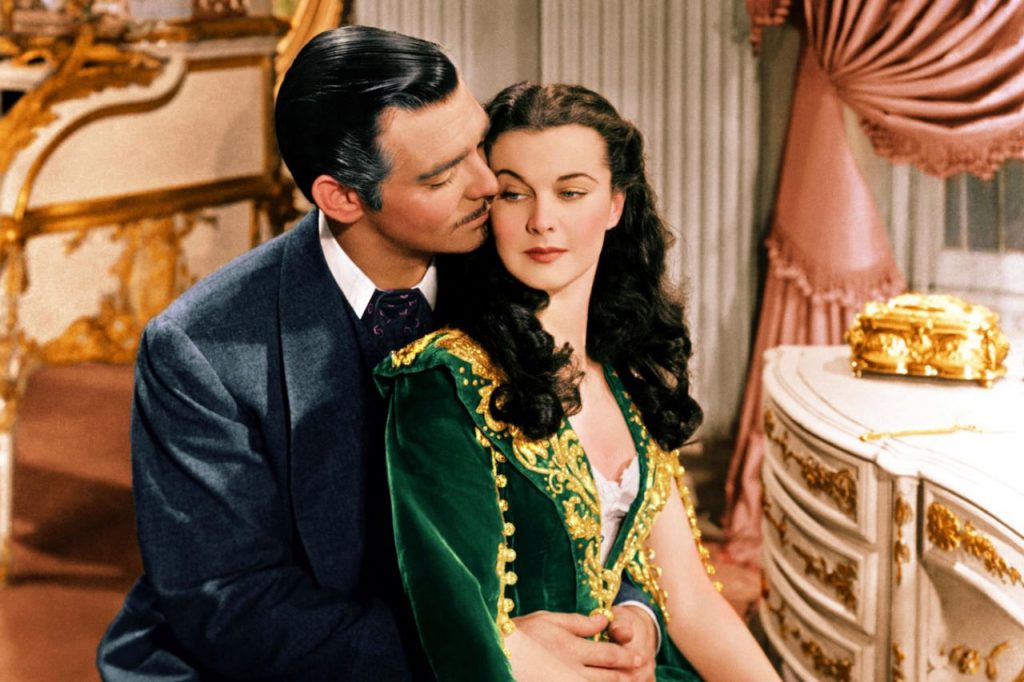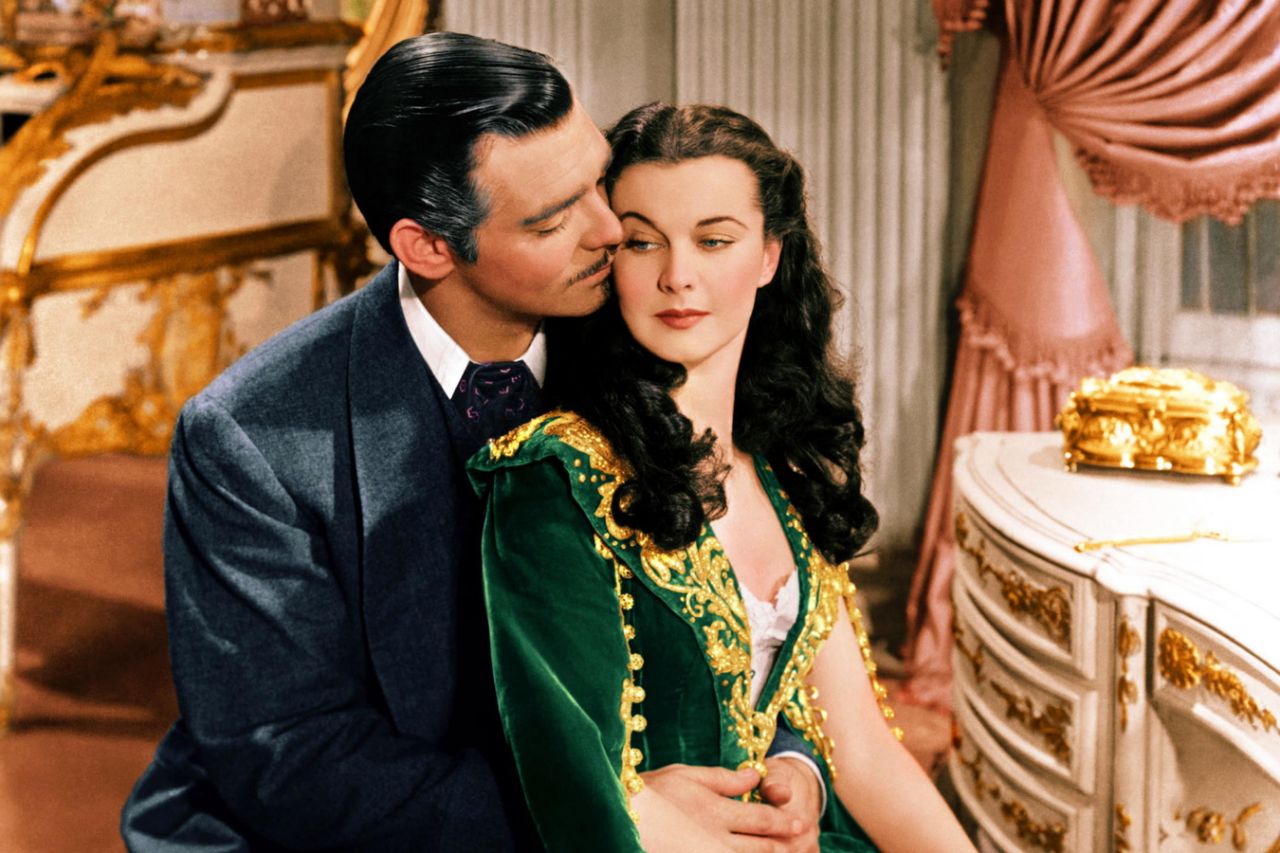Movies change for us over time because we change.
The first time I saw Gone with the Wind was at the age of six. Back then, before video technology (let alone DVDs and streaming video), the only way to see some classic movies was when they would go into theatrical re-release every few years.
Gone with the Wind has shaped me as a critic, scholar, teacher, and filmmaker. This is one of a handful of films seen in my childhood that had an outsized and lasting effect on me.
From the beginning (and more than I like to admit now), the movie also affected my sense of myself as a Southern woman and, later, seeing it was a mirror for my growing consciousness about social class, race, and intimate relationships between women and men. I’m going to talk more about the first two of those categories below.

Now that the iconic epic is coming back into cinemas for a limited number of screenings celebrating the 80th anniversary of its release, I need to find a nearby screen and take it in to reflect once more about my complex responses to this film.
The first time I saw Gone with the Wind, I was transfixed, which says quite a lot for a six-year-old child to have the patience to focus on a film with a four-hour runtime.
I wanted to be beautiful and strong and admired like Scarlett, and Ashley Wilkes made me swoon. I think his gentleness was comfortable for me as a little girl, and Rhett probably seemed a bit threatening. When I saw the movie again a few years later, it was Rhett who seemed thrilling to me, and I wondered why I didn’t find him so captivating before.
Southern women are often taught to be indirect, and Scarlett–for all her strength in some regards–is usually manipulative in the strategies she employs to get what she wants. It took me some years, into my late 20s or early 30s to begin shedding the idea that I had to be ladylike at all times, to hide my ambition, and to do whatever I could to spare the feelings of others and, over time, to replace that constructed identity with an authentic me.
When I saw Gone with the Wind during my middle teens, a new insight slapped me across the face: this film is racist! How could I never have seen the negative stereotypes and demeaning tropes before? Of course, I saw them at that time because I had grown as a person because of my experiences and the books and movies I had encountered since the previous viewing.
The movie was the same, but I was not.
In college, I saw the film again and found myself startled by the “staircase scene” and the realization that “Rhett raped Scarlett.” Processing all of this was an important step that helped prepare me to see myself as a feminist and claim that title publicly by my mid-twenties.
It was also in college that I started thinking about media texts in terms of aesthetics and ideology–two terms that are at once separate and inextricably linked in all of my analysis. Could I appreciate a film or admire certain elements of it without liking it? Could I love it but feel embarrassed by or angry about certain parts of it without feeling ashamed of my pleasure in watching it?
Yes, that’s a paradox. It has taken me years of watching and talking and writing to begin answering these questions.
My relationship to Gone with the Wind (and the novel, too, which I read in middle school and am thinking I should revisit) exists in this paradoxical space.
I love Gone with the Wind and also find it terribly problematic. How can I love a movie that is racist and promotes terrible relationship dynamics as an ideal in an intimate partnership? Have I been shaped in some fundamental way by this narrative–am I, fundamentally, some mixture of Scarlett and Melanie?–or have I used it as a stepping stone to see the culture I grew up in more clearly then transcend it?
Maybe we come to see a thing more clearly by learning about its opposite.
Is it possible that recognizing racism in glossy Technicolor attunes us to see it in daily life when most situations we encounter are more oblique than those that end up as news headlines?
Is it possible that recognizing sexism in scenes that are presented as the natural order of things provides a mirror to help us see the many ways women are complicit in perpetuating systems that hold us back and to understand that the dominant culture is constructed rather than natural?
Is it possible that competing messages found in media texts (and they are always there no matter how “enlightened” a creative team may be) train us for the complexity of our own experiences and give us tools to learn and to grow?
I think so.
And, to be honest, I can’t wait to see Gone with the Wind again (on the big screen!) and to spend time puzzling over how I feel about it now and why.

Mary Dalton,
Thank you for your thoughts on this — Over the past few weeks I’ve been pondering ideal or morality and ethics, trying to understand how acts/lack there of have the power to make us view powerful figures in a new light. When I think of Gandhi, Martin Luther King Jr., Brett Kavanaugh, and R. Kelly — especially the first two — I can’t help wonder if there blemishes in their personal lives are enough to tarnish their overall positive impact. I wonder what the line is and if there even is one I could steadily draw. You’re article, although about media, was incredibly poignant on this matter and has given me permission to find comfort in the “paradoxical space.” Knowing that as the world keeps changing, as I do, I will look at things differently, and perhaps even if something was “allowed/permissible” in the past, doesn’t mean we shouldn’t talk about why these ideas are problematic and damaging today. Thank you again.